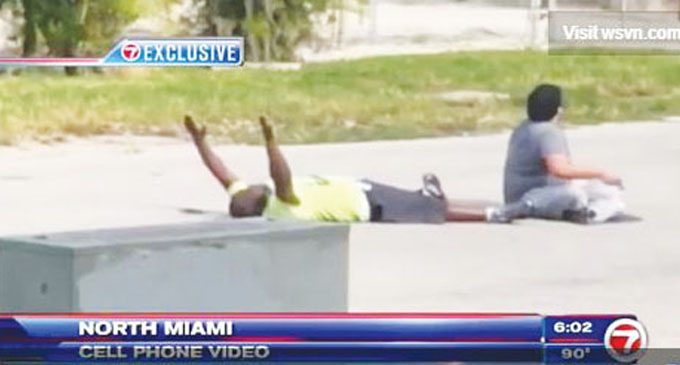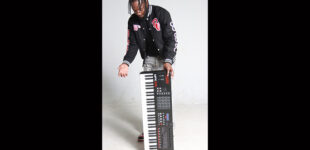Change in law enforcement action begins with a blink

It has happened again. A police officer shot an unarmed black man. This time the officer is Latino, and the situation is utterly unbelievable. As CNN reports it, in North Miami, an African-American caregiver, who was lying in the street trying to help an autistic patient, was shot in the leg after he yelled out what was happening, saying that no guns were needed and asked police to back down.
African-American Charles Kinsey, a behavior therapist, was shot Monday, July 18, by police as he was on his back with his hands up and was yelling to police that the autistic patient he was trying to help did not have a gun and that he was trying to help the patient. A video post on Wednesday, July 20, showed Kinsey in that position.
But a North Miami police officer still shot Kinsey in the leg. Police said it was a mistake; the officer was trying to shoot the autistic man because they thought he had a gun and was about to harm Kinsey (even though Kinsey told them otherwise).
“The [union] is now trying to say they intended to shoot my client, and instead they shot my employee,” Clint Bower, who employs Kinsey at the facility where the autistic man lives, told CNN’s “New Day” on Friday, July 22. “To me, that’s just outrageous.”
Officer Jonathan Aledda, who has been placed on administrative leave, issued a statement in the form of a text message: “I took this job to save lives and help people. I did what I had to do in a split second to accomplish that, and hate to hear others paint me as something I’m not.” But maybe that’s not quite true.
Author Malcolm Gladwell says in his stellar book “Blink: The Power of Thinking without Thinking” that
what we think of as decisions made in the blink of an eye are much more complicated than assumed. He used the example of the shooting of Amadou Diallo, which happened on Feb. 4, 1999. Amadou Diallo, a 23-year-old immigrant from Guinea, was shot and killed by four New York City Police Department plain-clothed officers, who fired a combined total of 41 shots, 19 of which struck Diallo, outside his apartment in The Bronx. All four officers were charged with second-degree murder and acquit-ted at trial in Albany, New York. Diallo was unarmed at the time of the shooting.
Gladwell draws on cutting-edge neuroscience and psychology to show how the difference between good decision-making and bad depends on how people focus on the details before them. The Diallo shooting sparked a number of experiments that were conducted with both undergraduate volunteers and police officers playing a computer game where they must choose whether to shoot or not to shoot a target who may be white or black, on the basis of whether or not they are armed. Such studies find that participants made slower and less accurate decisions on whether to shoot an unarmed black target than an unarmed white target, and were quicker and more likely to correctly decide to shoot an armed black target than an armed white target.
The decision-making depends on what is in the psyche at the time. So, it does have something to do with the background of a person. People might not be painting Aledda something he is not.
According to Kinsey’s attorney, Hilton Napoleon II, Kinsey was on the ground handcuffed for 20 minutes after he was shot before an ambulance arrived.
“We really need to look at how policing is approached today, because this should not happen in our country,” Napoleon said.
We agree. Try retraining law enforcement officers to do the right thing in the blink of an eye.











